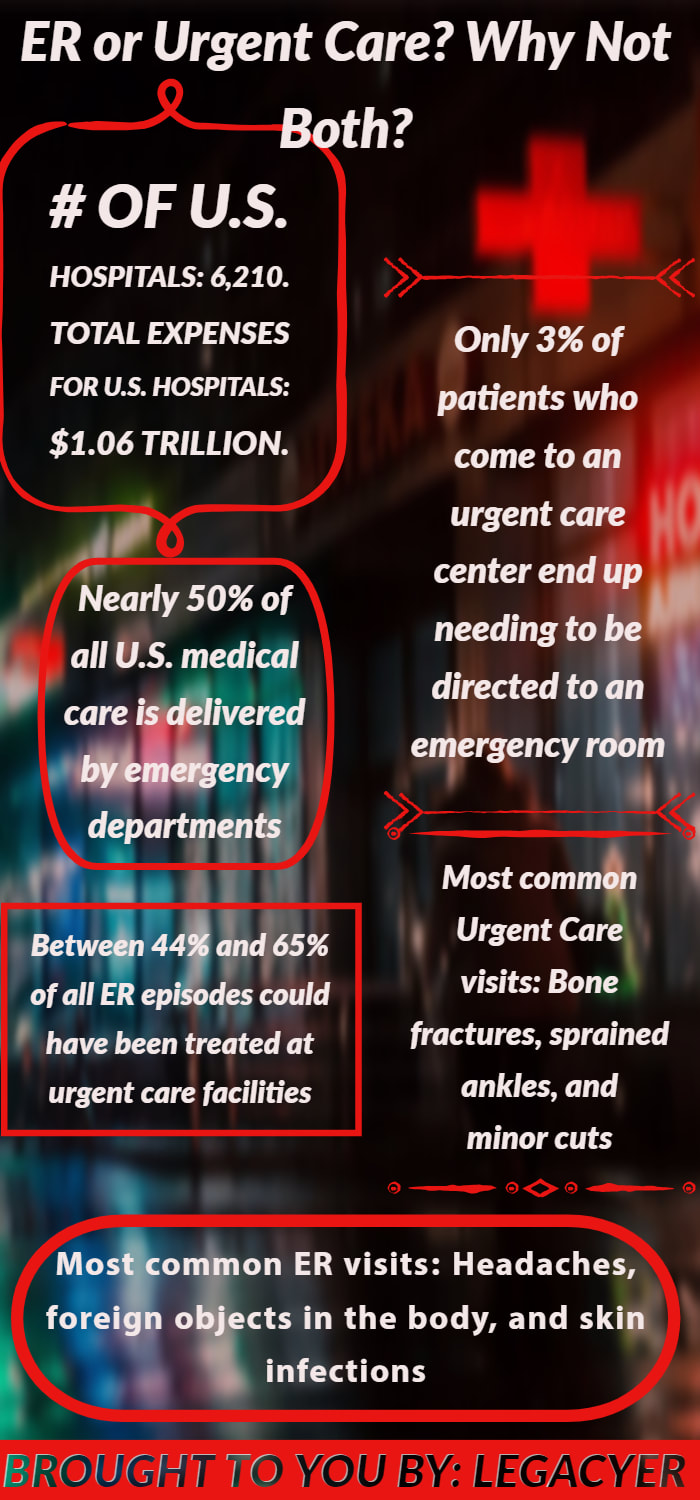Emergency Room or Urgent Care: Why Not Both? - Legacy ER
- Category: Patient Advice and Care
- Posted On:
- Written By: Alex Murray

No matter the severity of a medical situation, there is always going to be some level of stress, pain, and anxiety. Being able to quickly alleviate any pain and tend to any worries associated with your injury or illness is essential — which is why it’s important to get the right medical treatment.
Emergency rooms (ERs) are great for serious conditions requiring immediate medical attention and urgent care facilities are great for treating everything from strep throat to car accident injuries. However, finding a medical center that provides both types of care is a much more convenient option.
Number of U.S. Medical Facilities
The total number of hospitals across the United States is 6,210. Of that 6,210, approximately 5,262 are U.S. community hospitals, 602 are nonfederal psychiatric hospitals, 208 are federal government hospitals, and 120 are considered “other” hospitals.
“Other” hospitals include nonfederal long-term care facilities and units within an institution such as a prison hospital or school infirmary. Long-term care facilities include healthcare centers with an average length of stay of 30 or more days.
Hospital Admissions and Expenses
Across all U.S. hospitals, the number of total admissions reached 36.5 million last year. Total expenses for all U.S. medical facilities amounted to $1.06 trillion, as well.
In recent years, the percentage of care delivered by emergency departments has grown significantly, accounting for nearly half of all U.S. medical care.
ER and Urgent Care Treatment
While 44% to 65% of all ER episodes could have been treated at urgent care facilities, there certainly are plenty of times when it’s much more appropriate to seek medical attention at an emergency department. Conversely, only 3% of patients who end up going to an urgent care center for treatment need to be directed to an emergency department.
That’s why hybrid healthcare centers, which prioritize both kinds of treatment, are excellent options for patients in need of various forms of treatment. Next, we’ll take a look at some of the most common — and overlapping — reasons to visit both an urgent care facility and an emergency room:
ER Visit: 10 Most Common Reasons
- Headaches
- Foreign objects in the body
- Skin infections
- Back pain
- Cuts and contusions
- Upper respiratory infections
- Sprains and broken bones
- Toothaches
- Abdominal pain
- Chest pain
Urgent Care Visit: 10 Most Common Reasons
- Bone fractures
- Sprained ankles and knees
- Minor cuts and burns
- Car accident injuries
- Infections
- Cold and flu
- Conjunctivitis
- Migraine
- Headaches
- Strep Throat
Taking out the ability to choose during a medical situation can make all the difference in the world. Rather than spending time researching and determining what type of medical facility is necessary for a particular health concern, simply visiting a hybrid center is a much more convenient care approach.
Sources:
- https://www.aha.org/statistics/fast-facts-us-hospitals
- https://health.howstuffworks.com/medicine/10-common-reasons-for-er-visit1.htm
- https://familyfirst-urgentcare.com/the-10-most-common-urgent-care-situations/
